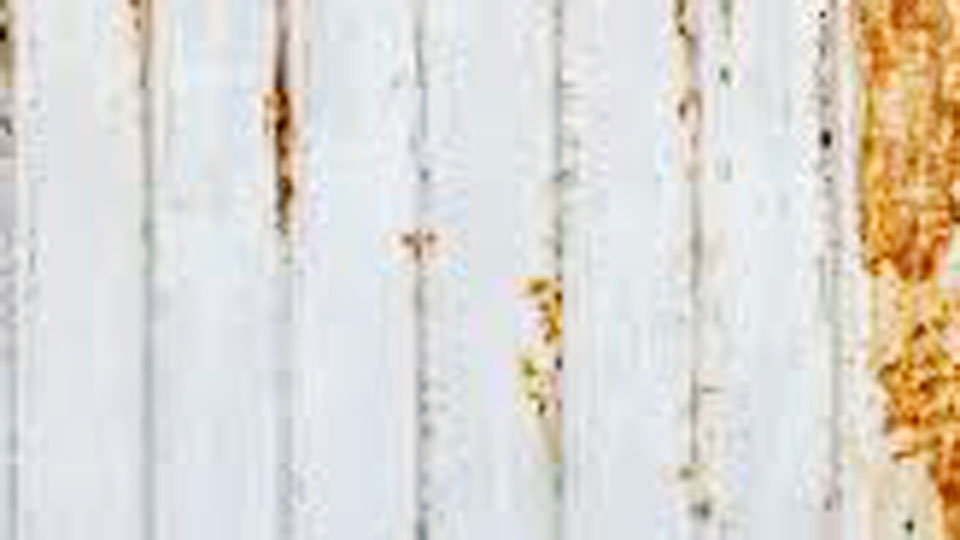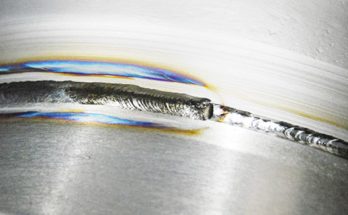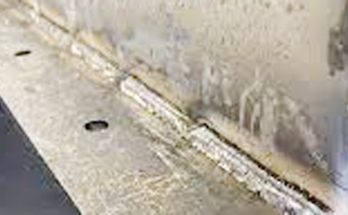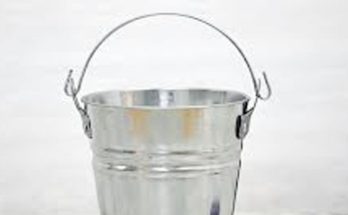Have you ever walked outside and noticed that your favorite white-painted metal furniture, railing, or even your car has started to show little brown spots? I sure have, and let me tell you — nothing is more frustrating than seeing rust creep into something you worked hard to keep nice.

Photo by cccpanels
When it comes to white painted metal, rust not only looks terrible but can also cause serious damage if you ignore it. The good news is, removing rust from white painted metal is absolutely doable.
You don’t have to be a professional to get great results — you just need to know the right methods and have a little patience.
I’ll walk you through everything I’ve learned about removing rust from white painted metal safely and effectively. We’ll cover the methods that actually work, the tools you’ll need, and even some tricks to keep the rust from coming back. Let’s get into it!
Why Rust Appears on White Painted Metal
Before we jump into solutions, it’s helpful to understand why rust shows up in the first place.
Rust happens when iron reacts with oxygen and moisture. Even if metal is painted, small cracks, chips, or imperfections can expose the bare metal underneath. Once water sneaks in, rust starts to grow, often spreading under the paint without you even realizing it.
White paint tends to show rust much faster because of the stark contrast. Even the tiniest rust spot becomes super noticeable on a clean white surface.
Understanding the cause is important because it tells us that just cleaning the surface isn’t enough — we need to tackle the rust at its root.
How to Tell If Rust Is Only on the Surface
Not all rust is the same. Sometimes it’s just sitting on top of the paint. Other times, it’s eaten deep into the metal. Here’s how you can tell the difference:
- Light surface rust looks like brownish spots or streaks. It usually hasn’t damaged the metal underneath.
- Deep rust might cause bubbling, flaking, or pitting. It often means the metal itself has started to weaken.
If the rust is just on the surface, you’re in luck — it’s much easier to clean without having to repaint everything. But even if it’s deeper, don’t worry. I’ll show you how to fix it properly.
Best Methods to Remove Rust from White Painted Metal
There’s no one-size-fits-all solution. The right method depends on how bad the rust is and what kind of metal you’re working with. Let’s go over the most effective techniques.
Using Mild Abrasives for Light Surface Rust
When the rust is just starting, you can often clean it off without damaging the paint.
What You’ll Need:
- Baking soda
- Water
- Soft cloth or sponge
- Mild dish soap
How to Do It:
- Mix a paste with baking soda and water. You want it thick enough to stick to a vertical surface.
- Apply the paste directly onto the rust spots.
- Let it sit for about 30 minutes.
- Gently scrub with a cloth or sponge.
- Rinse with clean water and dry thoroughly.
This method is safe and gentle. It’s perfect for delicate surfaces where you don’t want to scratch the paint.
Using Vinegar for Stubborn Rust
Vinegar is one of my favorite go-to remedies for rust. It’s cheap, safe, and pretty powerful.
What You’ll Need:
- White vinegar
- Spray bottle
- Soft-bristle brush or sponge
How to Do It:
- Spray vinegar directly onto the rusty spots.
- Let it soak for at least 20-30 minutes.
- Gently scrub with your brush or sponge.
- Rinse thoroughly and dry.
Vinegar works by reacting with the rust and loosening it from the surface. It’s a little stronger than baking soda, so it’s great when you need a bit more muscle.
Sanding for Heavy Rust
When rust has started to bubble the paint or flake off, you’re going to need to get more aggressive.
What You’ll Need:
- Sandpaper (start with 120-grit, move to 220-grit)
- Masking tape
- Primer and touch-up paint (optional)
How to Do It:
- Tape off the area around the rust spot to protect the good paint.
- Use 120-grit sandpaper to remove the rust and any loose paint.
- Switch to 220-grit to smooth out the surface.
- Wipe clean with a damp cloth.
- Prime and repaint if needed.
Sanding takes a little more effort, but it ensures you completely remove the rust and prevent it from coming back through the paint.
Chemical Rust Removers
Sometimes you need a heavy-duty solution, especially if you’re working on large surfaces like gates, fences, or cars.
What You’ll Need:
- Commercial rust remover
- Gloves
- Safety glasses
- Plastic scraper or brush
How to Do It:
- Follow the product instructions carefully.
- Apply the remover using a brush or cloth.
- Allow it to sit for the recommended time.
- Scrape or brush the loosened rust away.
- Rinse and dry completely.
Chemical removers work fast and get deep into the rust, but always wear gloves and work in a well-ventilated area.
Rust Removal Methods at a Glance
| Rust Severity | Best Method | Pros | Cons |
|---|---|---|---|
| Light surface rust | Baking soda paste | Gentle, non-toxic | Slower results |
| Moderate rust | Vinegar soak | Effective, easy to use | Strong smell |
| Heavy rust | Sanding | Full removal, prep for repainting | Labor-intensive |
| Very heavy rust | Chemical remover | Fast, thorough | Requires safety precautions |
Tips for Protecting the Paint During Rust Removal
If you’re working with painted metal, you want to preserve as much of the original paint as possible. Here’s what I’ve learned:
- Always start with the least aggressive method. Try baking soda or vinegar first before jumping into sanding or chemicals.
- Work slowly. Rushing can cause you to sand too much or scratch the surrounding paint.
- Mask off areas you’re not working on with painter’s tape and plastic wrap.
- Use soft brushes instead of steel wool whenever possible.
Your goal is to remove the rust without taking off good paint.
Preventing Rust After Cleaning
Once you’ve gone through all the work of removing the rust, you’ll want to keep it from coming back. Here’s what to do:
Apply a Rust Inhibitor
You can find sprays or wipes designed to prevent rust. They create a barrier that keeps moisture and air away from the metal.
Touch Up Any Bare Spots
If sanding or rust removal left bare metal, always apply a primer and matching touch-up paint. Exposed metal will rust faster than you can imagine if left untreated.
Keep the Surface Clean and Dry
Regularly wiping down your white painted metal with a dry cloth can make a world of difference, especially in humid or coastal areas.
Store Items Properly
For things like patio furniture or tools, covering them or moving them inside during rainy seasons can extend their life dramatically.
Homemade Rust Remover Recipes
Sometimes you don’t have time to run to the store. Here are a couple of easy DIY rust removers I’ve tried and trusted:
Lemon and Salt
- Sprinkle salt on the rust spot.
- Squeeze lemon juice over the salt.
- Let it sit for a few hours.
- Scrub gently with a brush.
Baking Soda and Hydrogen Peroxide
- Make a paste with baking soda and a little hydrogen peroxide.
- Apply to the rust.
- Let it bubble for 15-20 minutes.
- Wipe and rinse clean.
These methods are great for small jobs and use ingredients most people already have at home.
Mistakes to Avoid When Removing Rust
I’ve made plenty of mistakes so you don’t have to. Here are the biggest ones:
- Skipping the rinse — If you leave vinegar or chemicals on the surface, they can damage the paint over time.
- Using too much pressure — Scrubbing too hard can scratch the paint even more than the rust did.
- Not drying thoroughly — Water left behind invites new rust almost immediately.
- Ignoring tiny rust spots — Rust spreads fast under paint, so treat even small spots early.
When to Call a Professional
Sometimes rust damage is too severe to fix yourself. If you notice that the metal is weakened, cracked, or falling apart, it’s best to call in a professional. They can cut out the bad sections and weld or replace them properly.
Conclusion
Removing rust from white painted metal might seem like a big task at first, but it’s totally manageable when you have the right approach. If you’re tackling light surface rust with a bit of baking soda or sanding down deeper patches for a full repair, the key is patience and care.
I always tell my friends — the faster you act, the easier the fix. Don’t let a little spot of rust turn into a big, ugly problem. With the tips and methods we talked about today, you can keep your white painted metal looking bright, clean, and strong for years to come.
FAQs
Can I use WD-40 to remove rust from painted metal?
Yes, WD-40 can help loosen light rust, but it’s not a complete rust remover. It works best when combined with gentle scrubbing.
Is it okay to use steel wool on white painted metal?
It’s better to avoid steel wool because it can scratch the paint. Use a soft-bristle brush or a sponge instead.
Does vinegar damage paint?
If you let vinegar sit too long, it can dull the paint finish. Always rinse thoroughly after using it.
What’s the best rust remover for delicate painted surfaces?
For delicate surfaces, start with baking soda paste or vinegar before trying stronger chemicals.
How do I stop rust from coming back after I remove it?
Apply a rust inhibitor, touch up any bare metal with primer and paint, and keep the surface clean and dry.







